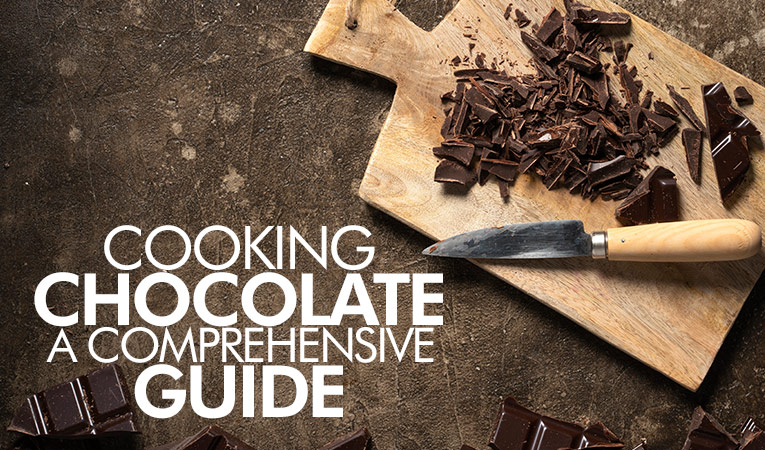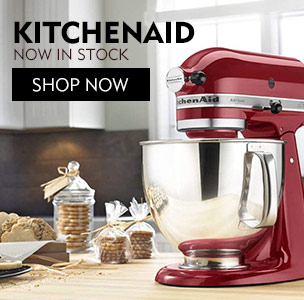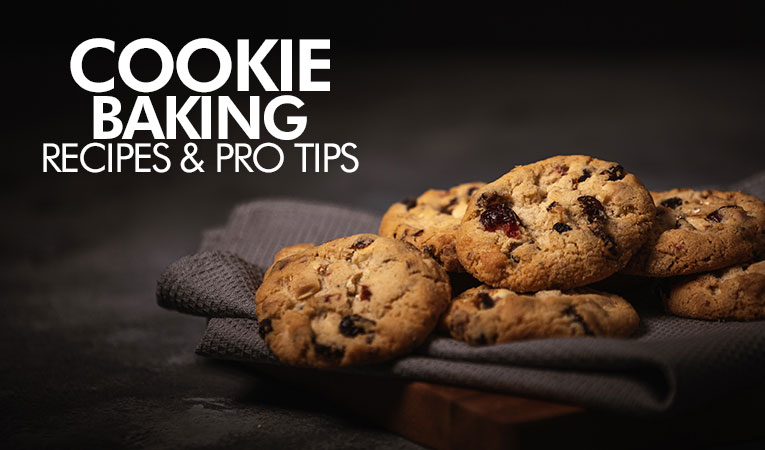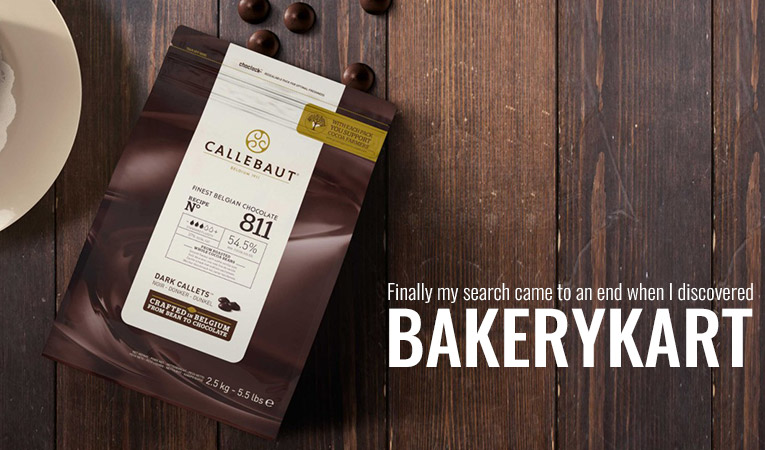Exploring the World of Cooking Chocolate: A Comprehensive Guide
29-05-2023

Cooking chocolate is a specialized type of chocolate used in baking, cooking, and confectionery. It is designed to withstand heat and maintain its shape and texture during the cooking process. With higher cocoa butter content than eating chocolate, it melts smoothly and provides a rich, intense flavor to various recipes. Available in dark, milk, and white varieties, cooking chocolate adds depth and indulgence to baked goods, desserts, sauces, and more. It comes in different forms like bars, blocks, and chips, making it convenient for measurement and melting. Cooking chocolate is a must-have ingredient for every aspiring chef and home baker.
Types of Cooking Chocolate:
- Dark Chocolate: Dark chocolate is made from cocoa solids, cocoa butter, and sugar. It has a higher percentage of cocoa solids, giving it an intense flavor and a slightly bitter taste. Dark chocolate is versatile and used in various baking recipes, as well as for making ganache, truffles, and chocolate bars.
- Milk Chocolate: Milk chocolate is made by adding milk powder or condensed milk to cocoa solids, cocoa butter, and sugar. It has a creamy and sweet flavor, making it popular in desserts, cookies, and candies. Milk chocolate is milder in taste compared to dark chocolate.
- White Chocolate: White chocolate is made from cocoa butter, sugar, and milk solids, without any cocoa solids. It has a creamy texture and a sweet, vanilla-like flavor. White chocolate is often used for coating, drizzling, and making confections.
- Semi-Sweet/Bittersweet Chocolate: Semi-sweet or bittersweet chocolate contains a higher percentage of cocoa solids and less sugar than milk chocolate. It has a rich and intense flavor with a hint of bitterness. This type of chocolate is commonly used in baking cookies, cakes, and brownies.
- Compound Chocolate: Compound chocolate is made with cocoa powder, vegetable fats, and sweeteners instead of cocoa butter. It has a lower melting point and is often used for coating or dipping items. Compound chocolate is less expensive compared to couverture chocolate.
Each type of cooking chocolate has its own unique characteristics and is suited for specific recipes. It's important to choose the right type of chocolate based on the desired taste, texture, and application in your culinary creations.
Cocoa Percentage: Understanding the Impact
When it comes to chocolate, you might have noticed labels indicating the cocoa percentage. This number refers to the proportion of cocoa solids and cocoa butter present in the chocolate. Understanding the cocoa percentage is key to selecting the right chocolate for your recipes and achieving the desired flavor and texture.
The cocoa percentage plays a significant role in determining the taste and characteristics of chocolate. Here's a breakdown of how cocoa percentage influences chocolate:
- Flavor Intensity: Higher cocoa percentages, such as 70% or more, result in more intense and pronounced chocolate flavors. These chocolates tend to have a deeper, bolder taste with complex notes of bitterness and fruity or earthy undertones. On the other hand, lower cocoa percentages, like milk chocolate with around 30-40% cocoa, offer a milder and sweeter flavor profile.
- Sweetness: As the cocoa percentage decreases, the amount of sugar relative to the cocoa increases. This leads to sweeter chocolate with less pronounced bitterness. Milk chocolate, with its lower cocoa content and added sugar, is a prime example of a sweet and creamy chocolate option.
- Texture and Mouthfeel: Cocoa butter, the natural fat in cocoa beans, contributes to the smoothness and melt-in-your-mouth texture of chocolate. Higher cocoa percentages often mean more cocoa butter, resulting in a smoother and silkier texture. Lower cocoa percentages, particularly in compound chocolates, may contain other fats besides cocoa butter, altering the texture and mouthfeel.
- Versatility in Baking: The cocoa percentage affects the performance of chocolate in baking applications. Higher cocoa percentages are well-suited for making ganache, mousse, and other recipes where a rich and intense chocolate flavor is desired. Milk chocolate, with its lower cocoa content and added milk solids, lends itself well to cookies, brownies, and other baked goods.
When selecting chocolate for your recipes, consider the cocoa percentage that best complements your intended flavor profile and culinary application. Experimenting with different cocoa percentages can offer a range of experiences and allow you to discover your personal preferences.
Remember, the cocoa percentage is just one factor to consider when choosing chocolate. Other aspects, such as the quality of the ingredients, origin of the beans, and processing techniques, also contribute to the overall chocolate experience. Embrace the diversity of chocolate and explore the wide range of cocoa percentages to unlock a world of delicious possibilities in your culinary creations.
Choosing the Right Cooking Chocolate for Your Recipe
When it comes to cooking and baking with chocolate, selecting the right type of cooking chocolate is essential to achieve the desired results. With various options available, it's important to consider certain factors to ensure the chocolate complements your recipe perfectly. Here are some key factors to consider when selecting cooking chocolate for specific dishes or desserts:
- Flavor Profile: Different types of cooking chocolate offer distinct flavor profiles. Dark chocolate is rich and intense, with a slightly bitter taste, making it ideal for recipes that call for a deep chocolate flavor. Milk chocolate is sweeter and creamier, lending itself well to desserts and confections. White chocolate has a smooth and sweet flavor with hints of vanilla. Consider the flavor profile that best suits your recipe.
- Cocoa Percentage: The cocoa percentage determines the intensity of the chocolate flavor and sweetness. Higher percentages are more intense and less sweet, while lower percentages are milder and sweeter. Choose the cocoa percentage that aligns with your desired taste and the recipe's requirements.
- Melting and Temperatures: Consider the melting characteristics of the chocolate. Some chocolates melt smoothly and evenly, while others may require tempering to achieve the desired texture and finish. If you're making chocolate decorations or need a glossy finish, couverture chocolate, which contains a high percentage of cocoa butter, is a good choice.
- Texture and Consistency: The texture of the chocolate can impact the final outcome of your recipe. For recipes that require a smooth and velvety texture, couverture chocolate is often preferred. On the other hand, compound chocolate, which contains vegetable fats instead of cocoa butter, holds its shape well and is suitable for coating or molding.
- Quality and Brand: Opt for high-quality chocolate from reputable brands to ensure superior taste and texture. Well-known brands like Callebaut and VanHouten are popular choices among chefs and home bakers.
- Dietary Considerations: Take into account any dietary restrictions or preferences when selecting cooking chocolate. Look for options that are labeled as vegan, gluten-free, or allergen-free, depending on your needs.
By considering these factors, you can choose the right cooking chocolate that enhances the flavors and textures of your recipes. Experiment with different types and brands of chocolate to find your favorites and create delightful desserts and dishes that will impress everyone.
Creative Uses of Cooking Chocolate:
Cooking chocolate opens up a world of possibilities when it comes to creating delicious and visually appealing treats. Here are some creative ways to use cooking chocolate in your culinary adventures:
Baking and Confectionery: Incorporating Chocolate into Cakes, Cookies, and Confections
- Use chocolate chips, chunks, or grated chocolate in your favorite cake, cookie, or brownie recipes for a rich and indulgent flavor.
- Create chocolate truffles, fudges, or chocolate bark for delightful homemade confections.
- Dip strawberries, marshmallows, or other fruits into melted chocolate for a quick and satisfying treat.
Desserts and Patisserie: Chocolate-Based Desserts, Tarts, and Patisserie Creations
- Indulge in chocolate mousse, chocolate lava cakes, or chocolate tarts for a decadent dessert experience.
- Experiment with chocolate ganache fillings, chocolate mousseline cream, or chocolate glazes to elevate your pastry creations.
- Craft chocolate-flavored ice creams, parfaits, or chocolate custards for a luscious and creamy dessert option.
Sauces and Ganaches: Making Smooth, Decadent Sauces and Ganache Fillings
- Whip up a velvety chocolate sauce to drizzle over ice cream, pancakes, or fresh fruit.
- Create a rich chocolate ganache for filling cakes, topping cupcakes, or sandwiching between cookies.
- Use chocolate ganache as a base for truffle fillings or as a decadent dip for churros or profiteroles.
Chocolate Decorations and Garnishes: Techniques for Creating Chocolate Decorations and Garnishing Desserts
- Learn the art of tempering chocolate to create glossy and firm chocolate decorations, such as curls, shavings, or lattice patterns.
- Pipe intricate designs or letters with melted chocolate for personalized cake decorations.
- Make chocolate leaves, flowers, or abstract shapes to adorn your desserts and add a touch of elegance.
These are just a few creative uses of cooking chocolate. Let your imagination run wild and explore the vast possibilities that cooking chocolate offers. With its rich and versatile nature, chocolate can transform ordinary desserts into extraordinary culinary creations that will delight your taste buds and impress your guests.
Storage and Shelf Life Guidelines:
Proper storage is essential for maintaining the quality and freshness of your cooking chocolate. Here are some best practices to follow:
- Temperature: Store cooking chocolate in a cool and dry place, away from direct sunlight and heat sources. Ideally, the temperature should be between 15°C to 20°C (59°F to 68°F).
- Packaging: Keep cooking chocolate in its original packaging or transfer it to an airtight container to prevent moisture and odors from affecting its flavor and texture. Make sure the container is clean and dry before storing the chocolate.
- Separation: Store different types of cooking chocolate separately to avoid flavor transfer. Dark, milk, and white chocolate can have distinct flavors that may mingle if stored together.
- Avoid Refrigeration: While refrigeration can extend the shelf life of chocolate, it can also cause condensation, which can affect the texture and appearance. Only refrigerate chocolate if necessary, such as in hot and humid climates.
- Proper Sealing: Ensure the packaging or container is tightly sealed to prevent air exposure, which can lead to oxidation and a decline in flavor quality.
- Shelf Life: Cooking chocolate has a long shelf life if stored properly. Dark chocolate can last up to two years, while milk and white chocolate have a shelf life of around one year. However, it's best to check the expiration date on the packaging for specific guidelines.
- Quality Check: Before using cooking chocolate, inspect it for any signs of discoloration, bloom (a whitish film on the surface), or off-putting odors. If the chocolate appears or smells off, it's best to discard it.
By following these storage guidelines, you can ensure that your cooking chocolate maintains its quality, flavor, and texture for a prolonged period. Proper storage will enhance your culinary creations and allow you to enjoy the full potential of your cooking chocolate in various recipes and desserts.
Tips for Working with Cooking Chocolate:
Working with cooking chocolate can be a delightful and rewarding experience. Here are some handy tips and tricks to ensure success when handling and working with chocolate:
- Quality Matters: Choose high-quality cooking chocolate for the best results. Look for brands that use premium ingredients and have a good reputation among bakers and chocolatiers.
- Melting Chocolate: Use a gentle heat method to melt chocolate. Break it into small pieces or chop it finely for faster and more even melting. You can melt chocolate using a double boiler or microwave in short intervals, stirring in between to prevent overheating.
- Avoid Water Contact: Water is the enemy of chocolate. Make sure all utensils, bowls, and tools are completely dry before coming into contact with chocolate. Even a small amount of water can cause the chocolate to seize and become grainy.
- Tempering Chocolate: Tempering is a technique used to stabilize chocolate, giving it a shiny appearance and a smooth texture. It involves melting the chocolate, then cooling and reheating it to specific temperatures. Tempered chocolate is ideal for making decorations, coatings, and molded chocolates.
- Room Temperature: When working with chocolate, ensure that the surrounding temperature is not too warm or too cold. Extremes in temperature can affect the chocolate's texture and set time. Aim for a room temperature of around 20°C (68°F) for best results.
- Chocolate Coating: When coating truffles, fruits, or other treats in chocolate, use a dipping fork or fork to ensure even coating and easy removal. Tap the fork gently on the side of the bowl to remove excess chocolate.
- Decorating Techniques: Experiment with different decorating techniques, such as piping melted chocolate, creating chocolate curls or shavings, or using molds for intricate designs. You can also drizzle melted chocolate over desserts or use it to create beautiful patterns and decorations.
- Practice and Patience: Working with chocolate can take practice and patience. Don't be discouraged if your first attempts aren't perfect. Learn from the process, make adjustments, and keep experimenting to enhance your chocolate skills.
Remember, working with chocolate is a creative and enjoyable process. With these tips and tricks, you'll be able to handle and work with cooking chocolate like a pro, creating delectable treats and desserts that will impress your friends, family, or customers.
Common Mistakes to Avoid When Working with Cooking Chocolate:
Working with cooking chocolate requires some attention to detail to achieve the best results. Here are some common pitfalls to watch out for and avoid:
- Overheating: One of the most common mistakes is overheating the chocolate. Heating chocolate at high temperatures or for too long can cause it to burn or become grainy. Use gentle heat and be mindful of the melting process.
- Moisture Contamination: Moisture is the enemy of chocolate. Even a small amount of water can cause the chocolate to seize and become lumpy or grainy. Make sure all utensils, bowls, and tools are completely dry before working with chocolate.
- Rapid Temperature Changes: Rapid changes in temperature can cause the chocolate to develop a dull appearance or form unsightly white streaks called "bloom." Avoid exposing melted chocolate to cold air or refrigerating it too quickly.
- Using Low-Quality Chocolate: The quality of the chocolate you use will greatly impact the final outcome of your dish. Using low-quality chocolate can result in a subpar taste and texture. Invest in good-quality chocolate for the best results.
- Rushing the Tempering Process: Tempering chocolate is crucial for achieving a shiny and smooth texture. Rushing through the tempering process can result in poorly tempered chocolate that may not set properly or have a dull appearance.
- Not Allowing Sufficient Cooling Time: When working with chocolate for coating or molding, it's important to allow enough time for the chocolate to cool and set properly. Rushing this step can lead to uneven coatings or difficulty in removing the chocolate from molds.
- Adding Cold Ingredients to Melted Chocolate: When incorporating other ingredients into melted chocolate, such as butter or cream, make sure they are at room temperature. Adding cold ingredients can cause the chocolate to seize or become lumpy.
- Not Allowing Chocolate to Fully Set: Patience is key when working with chocolate. Rushing the setting process by refrigerating or freezing the chocolate may result in a compromised texture or appearance. Allow the chocolate to set at room temperature for optimal results.
By being mindful of these common mistakes, you can ensure a smooth and successful experience when working with cooking chocolate. Take your time, follow proper techniques, and enjoy the process of creating delicious chocolate treats and desserts.
Frequently Asked Questions About Cooking Chocolate:
What is the difference between cooking chocolate and eating chocolate?
Cooking chocolate is specifically formulated for baking and cooking purposes. It has a higher cocoa butter content and is often less sweet compared to eating chocolate. Eating chocolate is typically enjoyed as-is and may have a different texture and flavor profile.
Can I substitute cooking chocolate with eating chocolate in recipes?
While it is possible to substitute cooking chocolate with eating chocolate in some recipes, keep in mind that the results may vary. Cooking chocolate is designed to withstand higher temperatures and has a different texture, which can affect the outcome of your dish. It's best to use the recommended type of chocolate for the specific recipe.
How long does cooking chocolate last?
The shelf life of cooking chocolate can vary depending on the brand and type. Generally, dark chocolate has a longer shelf life compared to milk or white chocolate. It is best to check the packaging for specific expiration dates and use the chocolate within that time frame for optimal quality.
Can I melt cooking chocolate in the microwave?
Yes, you can melt cooking chocolate in the microwave. However, it is important to melt it in short intervals and stir frequently to prevent overheating. Be cautious as chocolate can easily burn or become lumpy when exposed to high heat.
How can I fix seized chocolate?
If your chocolate seizes and becomes lumpy or grainy, you can try adding a small amount of vegetable oil or cocoa butter and gently heating it until smooth. However, it's best to prevent seizing by ensuring that all utensils and ingredients are dry and avoiding contact with water.
Can I freeze cooking chocolate?
While it is not necessary to freeze cooking chocolate, you can do so if needed. Make sure to wrap it tightly in plastic wrap or place it in an airtight container to protect it from moisture and odors. Thaw the chocolate in the refrigerator before using it.
These are just a few common questions about cooking chocolate. If you have any specific queries, feel free to reach out for further assistance.
Conclusion: Unleash Your Culinary Creativity with Cooking Chocolate
Unleash your culinary creativity with cooking chocolate! This comprehensive guide has equipped you with the knowledge and tips you need to explore the world of cooking chocolate. Whether you're a seasoned baker or a novice in the kitchen, understanding the different types of cooking chocolate, storage guidelines, working tips, and common mistakes to avoid will help you achieve delectable results in your recipes.
At bakerykart, we offer a wide range of top-quality cooking chocolate brands such as Callebaut, Veliche, and Van Houten. With their premium quality and irresistible flavors, these chocolates will elevate your culinary creations to new heights. Visit our website to explore our collection and choose the perfect chocolate for your next baking adventure.
We hope you've found this guide helpful and inspiring. If you have any questions or would like to share your experiences, please leave a comment below. We value your feedback and would love to hear about your culinary endeavors with cooking chocolate. Unleash your creativity and enjoy the delightful world of cooking chocolate!





